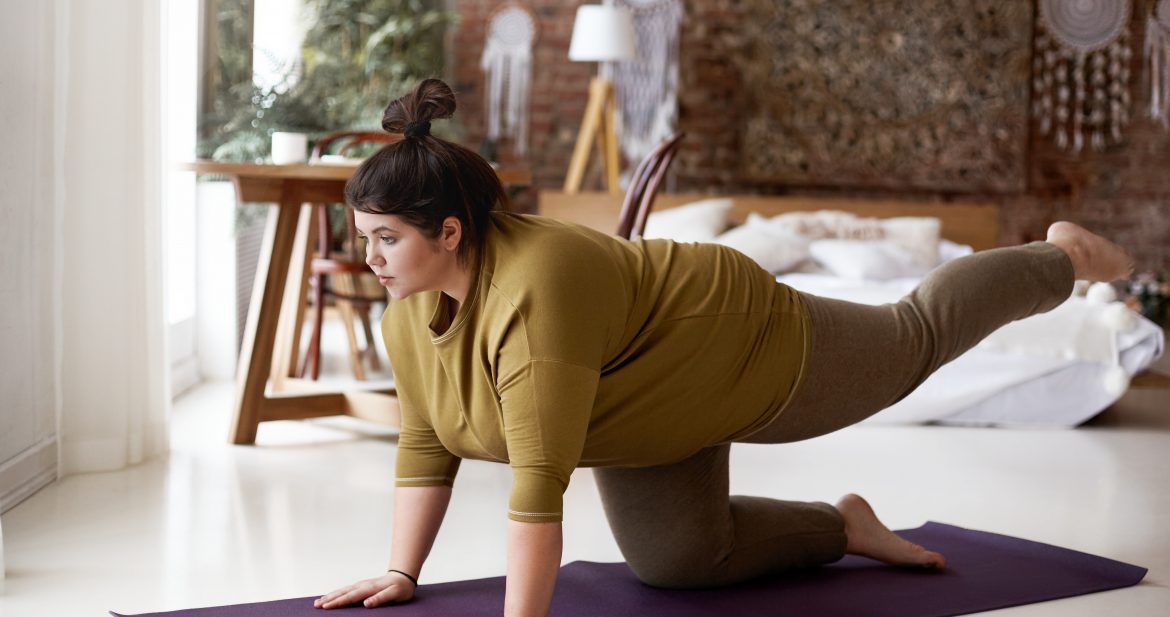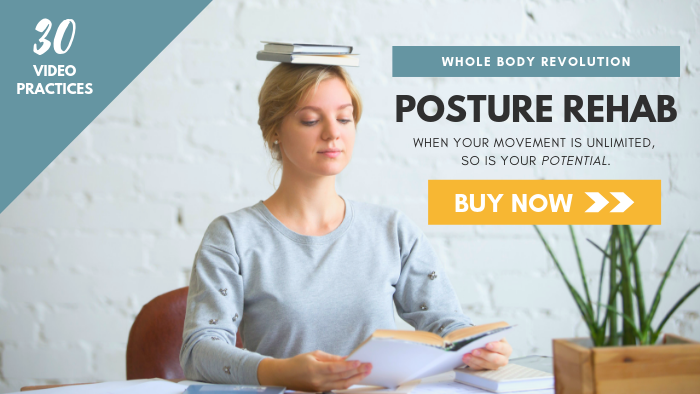By far the most common advice that my clients have received for back pain is to focus on core strength.
Everyone from doctors and physical therapists to Pilates instructors, personal trainers, yoga teachers and Nancy who sits three cubicles down at work recommends strengthening your core to support your spine.
Core strength exercises are those that target the muscles around your abdomen, back and pelvis — more or less what a corset would cover. Strong core muscles support your spine, making it easier to do physical activities without injuring yourself. Or so the theory goes.
But interestingly…
A lot of people don’t get any back pain relief from doing core strengthening exercises. I have clients who have tried all the usual suspects — planks, side planks, dead bugs, you name it — with no results.
But it’s a basic law of physics that core strength provides support for your back. So if getting a stronger core isn’t helping your back pain, what’s going on? And should you keep doing the core strength exercises or try something else completely?
Here are three reasons that strengthening your core isn’t helping your back pain:
Related:
- What Kind of Shoes Should I Wear for Healthy Feet and Posture?
- If You Must Sit at a Computer, At Least Do This…
- What is Perfect Posture and How Do I Get It?
Your Core is Too Rigid
Core strength has become the darling of the fitness industry in the past few years. And for good reason. A lot of people lack integrity in their midsection, leading to spinal instability.
However, core strength has a dark side. It seems that most fitness professionals follow the axiom that if a little is good, a lot must be better.
And that’s where we run into huge problems…
Because your core is supposed to MOVE. In fact, a lot of our problems with back pain arise from a faulty model of the spine. Even our language talks about the spinal “column,” as though it’s a stiff strut.
Actually, your spine is made up of 33 bones, most of which have multiple joints to allow movement. Your spine functions more like a spring or a slinky than a strut.
In fact, Serge Gracovetsky, author of The Spinal Engine, studied the spine extensively and found that your spine actually initiates gait. Meaning: your legs aren’t the only thing doing the walking. It starts in your spine.
So when people crank down on their cores with too many tension-generating exercises, all that ensuing rigidity results in a spine that can’t move.
And that means that the impact of your foot on the ground when you walk doesn’t translate up through the core the way it’s supposed to — it gets jammed somewhere, ultimately resulting in wear and tear on your back muscles which take up the slack.
You’re Only Doing Static Core Strength Exercises
So many core strength exercises don’t translate into real life. Planks are one of those things. I’m not opposed to the occasional plank, and side planks do have some benefit (especially for scoliosis).
But, as in all things relating to the body, your core isn’t a single entity. It connects and relates to the rest of your body.
Exercises that teach your body how to engage core muscles while still maintaining movement are preferable to those that only hold one isometric position. An isometric contraction is helpful for “turning on” a muscle — basically, helping the brain to find it.
It doesn’t necessarily help the body to engage the muscle while doing everyday tasks, though, like hefting groceries and toddlers. Or bales of hay and water buckets, if that’s more your thing.
Core Strength Goes Against Your Beliefs
This one is probably my favorite, and the one that’s most likely going to require you to keep an open mind.
Did you know that the tension in your body is the physical manifestation of your thoughts? Some people even say that the body is the subconscious mind. While your body doesn’t “store” emotions per se, it experiences them alongside your thoughts.
In fact, your physical experience is inseparable from your mental and emotional experience. You cannot have a thought without having a corresponding physical reaction.
And interestingly, your body will be unable to do something that doesn’t align with your beliefs.
For example, if I ask you to hold your arm out straight and say, “My name is _____” inserting your name in the blank space, your arm will hold strong if I press it firmly but gently downward.
If, however, I ask you to say, “My name is Sukie,” your arm will become weak when I press down on it lightly. You’ll be unable to hold it up.
Presuming your name is not Sukie, of course.
We all carry subconscious programming about our identity. These are subconscious thoughts and ideas that we picked up from our experiences in early life or from strongly charged emotional events — things like car accidents, a terrifying medical diagnosis, emotional shock, and even severe trauma.
All of these experiences write a sort of operating code on your brain that you integrate into your sense of self. And then that shapes how you move through the world — physically and metaphorically.
So, what does all of this have to do with core strength?
If strong, whole, healthy and functional do not align with your beliefs about yourself, you will not achieve that state no matter how much you try to affect your physical body through stretching, strengthening and whatever other means of exercise.
If your belief about yourself — your self identity — aligns with “I’m broken,” which is a paradigm perpetuated by the western medical system, then it becomes impossible to align with “I’m strong and healthy and whole.”
And the western medical model does a bang-up job of focusing our attention on the areas where we’re broken. That is essentially the western medical model in a nutshell: find out where you are broken, and if you are in pain, you must be broken.
The notion of brokenness comes in many forms. Some people may feel that they’re not fully whole, or that they are/have been shattered. I’m not good enough is another version of I’m broken. When you align your identity with not enough, you put yourself into a position of having to become something else, to fix things about yourself in order to be loved, to be deserving of love, of attention, of affection, all these things.
And a lot of us have that tape playing on some level in our heads. Even if it’s not the totality of your identity, it might be your self-identity in an area of your life, like I’m not a good athlete, I’m not good at food, I can handle this area of my life but I can’t handle my diet.
So let’s just sum all these various beliefs up as “I’m broken.”
If “I’m broken” is your identity on a deep, deep level — we’re talking sub-sub-conscious, cellular biology level stuff — and then you try to fix yourself by strengthening your abdominals, your muscles will resist getting stronger. Or you’ll constantly injure yourself at the gym.
Ever met that person who just gets one workout-sabotaging injury after another sometimes in the weirdest and wackiest of ways?
If strong and whole are concepts that are out of alignment with your self identity, you have to shift the identity for the core strength exercises to take effect.
(Umm, you still have to do the exercises, by the way. You can’t just sit on your couch and think “I’m so strong” while popping back donut holes. I wish. But alas, it doesn’t work that way.)
Ack, So How Do I Fix This?
If your core is rigid, static and you’re starting to become aware that you’ve got a few less than ideal beliefs about yourself, don’t panic.
Also, keep your towel close by. (#nerdreference)
Here’s the good news:
It’s relatively easy to restore dynamic movement to your spine and core. My clients often feel results after just a single session with me.
And because spinal mobility is so freaking vital for a pain-free life, I’ve included several spinal twisting practices in my Posture Rehab program.
These will defrost your frozen spine so that it moves naturally again.
From the belief angle…
You probably already know that your mind affects your body. But did you know that your body also affects your brain?
Moving differently causes you to think differently. That’s because, as I said, the body is your subconscious mind. When you shift the physical, your thoughts and feelings follow suit.
But just going to the gym won’t do it. Nor will yoga in front of the tv.
To really get results, you have to show up with your mind and body. You’ve got to move slowly and intentionally. You’ve got to feel the movements, not just go through the motions.
And that’s why Posture Rehab is unlike anything else you’re going to find out there. It’s not just another list of how to sit in a chair and what height to set your computer monitor at.
It uses investigative movement practices to dig underneath years of accumulated tension to basically hit the neural reset button on your body and brain.
Want to try it out?


Where is the link! This SPOKE to me!